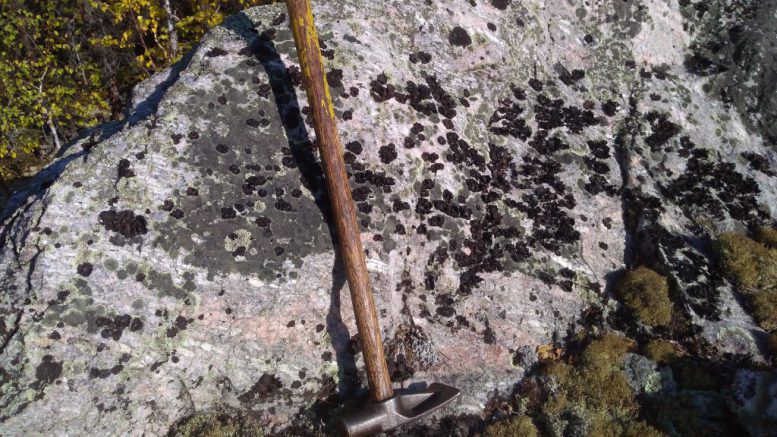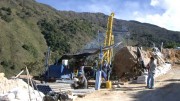After 15 years funding Canadian exploration in more than 450 financings advancing billions of dollars to hundreds of issuers on behalf of thousands of clients, we at PearTree share the sector lament best said by the late comedian Rodney Dangerfield: “I get no respect.” (Those under 45 are now hitting YouTube — as you should, in which case our job here is mostly done.)
Over the past three years of daily press alerting the tech-dependent world of shortages to come and dangerous dependencies on dictatorships for supply, we are now seeing clients (more like the adult children of clients) understanding that without exploration and mining, there is no Apple or Tesla. The generation of investors who would not invest in our sector but happily invest in tech are finally respectful of what members of the Prospectors and Developers Association of Canada passionately understand and promote: mining is good, exploration is great, protection of the environment and respect for Indigenous rights, paramount.
There is a recent convergence of factors leading to social licence resulting in an exploration/mining renaissance. All the social media (and not so social media) surrounding environmental, social and governance (led by the ‘E’), Indigenous rights, coupled with the acute need for reliable local critical minerals and supply chain manufacture, has attracted new younger generalist investors into the sector.

Ron Bernbaum
And with uncanny political timing, last April Canada’s Federal Finance Minister, Chrystia Freeland, tabled her second budget, introducing a new 30% Critical Mineral Exploration Tax Credit (CMETC) eligible in conjunction with the issuance of flow-through shares funding exploration programs prospecting for 15 critical minerals.
The CMETC is a five-year incentive relating to Canadian exploration programs for nickel, cobalt, lithium, graphite, copper, rare earth elements, vanadium, tellurium, gallium, scandium, titanium, magnesium, zinc, platinum group metals and uranium.
The minerals in this group play key roles in the production and processing of advanced materials, semi-conductors and clean technology, including batteries and permanent magnets used in zero-emission vehicles.
For the past decade PearTree has advocated for expanding the flow-through share regime for funding resource exploration and mining development, demonstrating that the regime is a fiscally fair and efficient way to drive rapid job creation in northern and remote communities. Holistically $1 of investor tax deduction is matched to $1 of taxable activity — mostly labour — in those communities. We have shown this fairness and efficiency to be the case as far back as 2012 with the commissioning of a Deloitte study (see www.peartreecanada.com) and continued advocacy federally and provincially.
Simply put, properly structured tax incentives — the best example being the flow-through regime, work. Immediately upon announcement of the new critical minerals tax credit, public markets and global investors responded. PearTree is just one market participant, but from April to December, even with yet to be fully baked legislation, we closed 12 critical mineral financings totalling $80 million.
Flow-through shares are a uniquely Canadian tax scheme first introduced in the 1970s.
A flow-through share (FTS) is nothing more than a common share issued from a company’s treasury where the use of funds is limited to exploration or development activities as defined in Canada’s Income Tax Act (ITA). For tax purposes, flow-through shares behave much like a limited partnership unit: the investor buying the shares funding the exploration or development accesses the tax deductions. Think geologists and drilling contractors that are ‘flowed through’ to the first subscriber from treasury. A flow-through share funds new prospective exploration. Otherwise, the share simply trades on the exchanges as common shares.
A $100,000 flow-through investment results in an investor deducting $100,000 from his or her income. In addition, for early stage surface exploration, the federal government and some provinces provide further tax credits. Historically, there is the federal Mineral Exploration Tax Credit, which provides a 15% credit for grassroots exploration. In the example above, the investor will deduct $100,000 and access a full $15,000 federal tax credit. The new Critical Mineral Tax Credit of 30% is limited to exploration for the 15 minerals referred to above. Provinces can then add tax incentives to promote exploration activity within the province. The leader in supporting the sector is Quebec. PDAC has written extensively on the flow-through regime. (See www.pdac.ca for a province-by-province chart mapping the after-tax cost of investing in flow-through shares funding exploration.)
Investing in resource exploration is venture capital at its riskiest. In the past 10 years, while other public exchanges have shown robust double-digit returns, the TSX Venture Exchange (TSXV) — the home of the juniors’ resource market — has lost 64% of its value. What the flow-through share regime does brilliantly is to risk adjust on an after-tax basis on investment in this sector. And to the credit of PearTree and its principals, we now have an investment platform that further flows through the tax incentives to global investors by enabling Canadian taxpayers to access the flow-through tax benefits as the first subscribers from treasury as a way to reduce their after-tax cost of philanthropy, with the shares immediately donated and conveyed to global investors at a discount to market stripped of tax value.
From the issuer’s perspective, the common shares designated as flow-through shares command an issue price premium to market, thus reducing dilution, and at the same time, enabling global investment at a reduced risk-adjusted cost of capital.
Unlike any other sector, while issuer ownership may change, exploration and mine jobs and taxes/royalties paid to the fiscal authorities remain in Canada.
We at PearTree continue our decade-long advocacy for fair evidence-based tax incentives in support of the resource sector. We are keen to work alongside and assist other stakeholders in preparing and presenting submissions to federal and provincial politicians and bureaucrats.
We are actively advocating for further improvements to the tax regime in support of mineral exploration including:
- Making all 31 critical minerals, per the Natural Resource Canada (NRCAN) list, eligible for the Critical Mineral Exploration Tax Credit (CMETC);
- Making critical minerals, including lithium found in “bedded deposits,” eligible for flow-through shares;
- Increasing the Mineral Exploration Tax Credit (METC) from 15% to 30% and the CMETC from 30% to 50% in the Yukon, Northwest Territories, and Nunavut;
- Expanding eligible Canadian Exploration Expenses (CEE) to include expenses related to advanced exploration;
- Equalizing the impact of Alternative Minimum Tax (AMT) with respect to investments in flow-through shares, which are subject to the new CMETC to mirror that of the existing METC; and
- Reducing the capital gains inclusion rate on investments in flow-through shares from 50% to 25%.
These are exciting times for those prospecting for critical minerals. Hopefully the expanded interest in the Canadian resource sector will also benefit the precious metals and others perennially short on capital. For those who lost in crypto currency now looking at critical minerals may very well come to love the currency that is gold. We have their attention.
— Ron Bernbaum is the founder and CEO of PearTree Canada. Copies of PearTree’s submissions are available by contacting Alanna Clark at Alanna.clark@peartreecanada.com.






Be the first to comment on "The new Critical Mineral Exploration Tax Credit is a good start – but more support is needed"